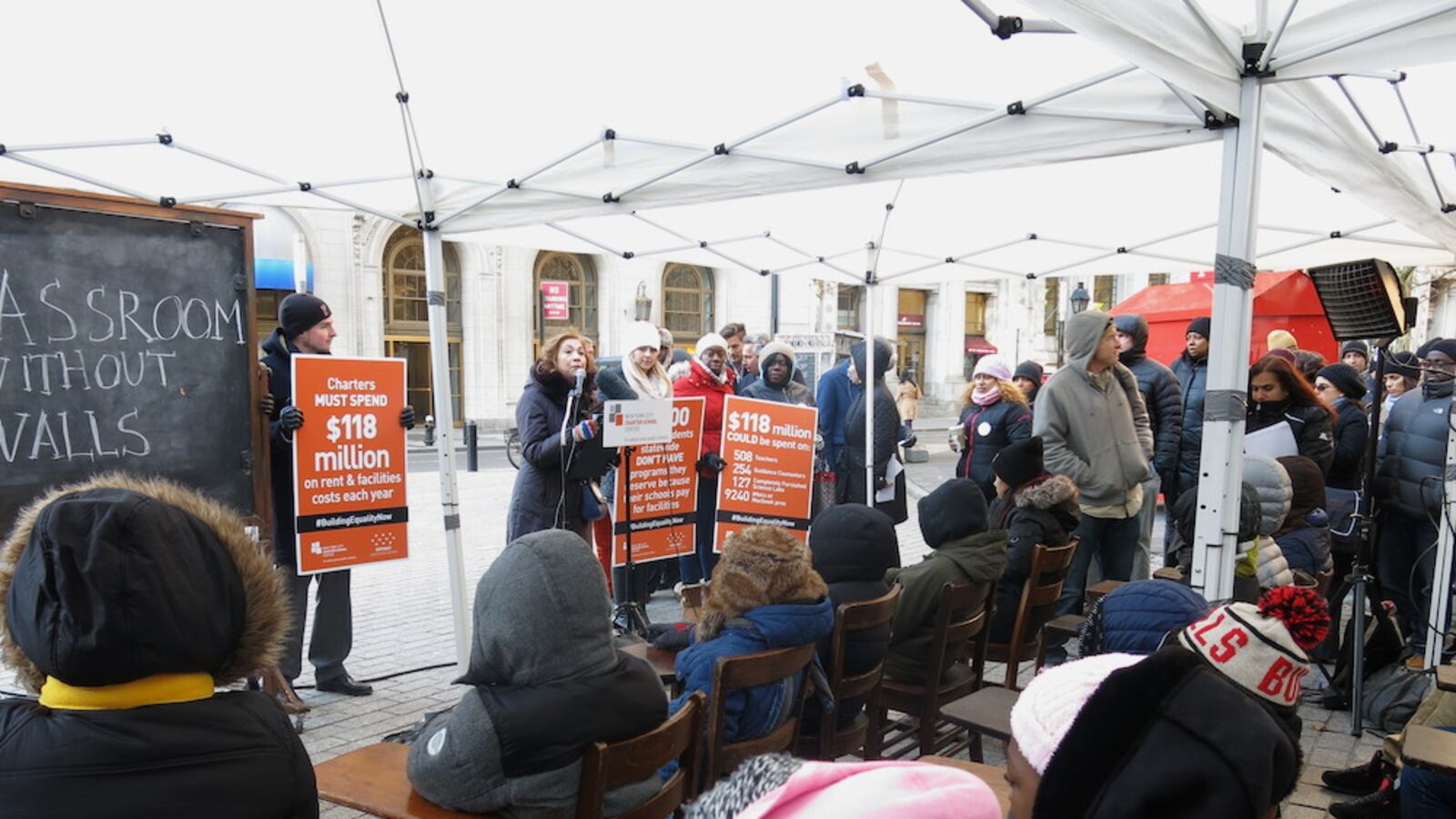Charter school students bundled up for a field trip to the city’s oldest public park on Tuesday, but the lesson was more about modern politics than history.
Seated in school desks beneath a tent in Bowling Green park, the students were participating in an outdoor demonstration meant to highlight the funding gap that exists among the city’s charter schools. The event, which charter leaders called a “classroom without walls,” took place as the advocates prepare to take their case for more facilities funds to Albany when the legislative session begins in January.
“This is a visual and, given the weather, tactile metaphor for what charter school leaders have to put up with,” said James Merriman, CEO of the the New York City Charter School Center, one of the event’s hosts.
New York City is seen as having one of the most welcoming real estate environments in the country for charter schools. Under Mayor Michael Bloomberg, most charter schools received rent-free space inside of district buildings, and new and expanding charter schools will have their facilities expenses covered by the city under a new state law.
But 67 charter schools weren’t given space under Bloomberg, just over one-third of charter schools citywide. The same schools, which have paid their own facilities bills for years, were given the cold shoulder in last year’s state budget deal, which did not provide anything for existing schools. Private facilities cost those schools $2,500 per student on average last year, according to an analysis by the Charter Center released in conjunction with the event.
The student’s lecturers on Tuesday were principals and other advocates who groused that too much of their budgets was spent on facilities, taking away money for teachers, guidance counselors, and new technology or sports programs.
“With that money, I would expand psychiatric services for the students who have chronic trauma,” said Barbara McKeon, principal of Broome Street Academy, which serves a large homeless and foster care population.
Drawing lawmakers’ attention to the facilities funding issue for a second straight year may be a tough task, though. A jumble of funding issues are expected to be on the table in next year’s budget negotiations, and many lawmakers see another school space problem — overcrowding — as a more pressing problem.
Facilities funding also won’t be the top priority for the charter sector’s most powerful backers. The city’s growth-minded charter networks have shifted their focus to lobbying legislators to lift the cap on the number of schools allowed to open in New York City. Most of the schools run by networks operate in city-owned school buildings, and none participated in Tuesday’s event, though the Success Academy network released a statement of support.
“Public school students — charter or district — deserve equitable funding,” said Success Academy CEO Eva Moskowitz. “Without fair funding for facilities, schools in private space are forced to compromise in ways that negatively impact children.”
Tuesday’s event was understated compared to the rally that Moskowitz participated in last month, which drew thousands of parents. Charter school leaders also took pains to distance themselves from some of the most common criticisms lodged at the sector: that charter schools are a tool to undermine the teachers union and that their enrollment policies unfairly limit the number of high-need students they serve.
“I spend funding that belongs to my students that could go to resources to support my UFT teachers on necessities like cleaning service, utilities, and other facilities costs,” said Vasthi Acosta, principal of Amber Charter School in East Harlem, one of 21 city charter schools whose teachers belong to the United Federation of Teachers.
Meanwhile, McKeon highlighted the fact that her charter high school sets aside seats for some of the city’s hardest-to-serve students.
“We are a school for whom 50 percent of the student demographic have been in the foster care, homeless, welfare system,” said McKeon.

